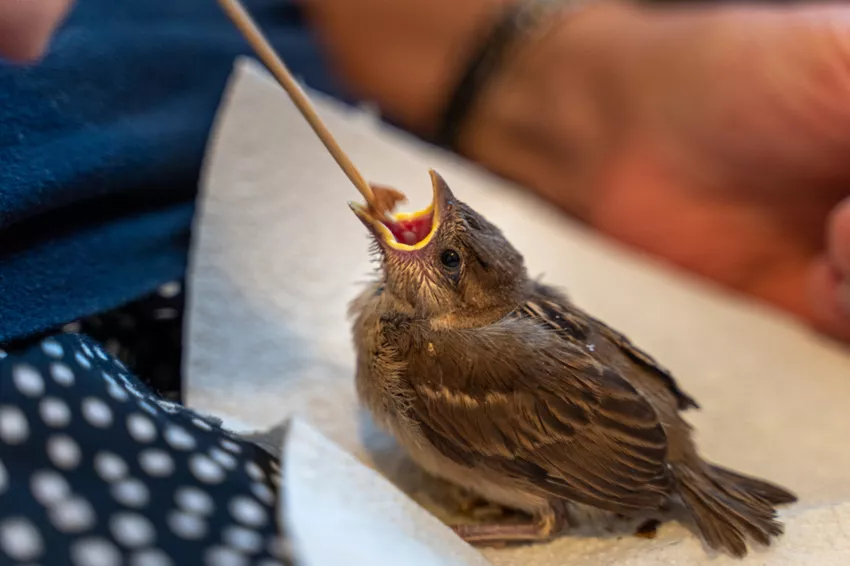Birds should only be included in absolutely exceptional cases. Even if the animals appear abandoned and in need of help, human intervention is not always necessary. Monitor the situation closely before intervening.
 Baby birds should be fed insects
Baby birds should be fed insects
What to do with found young birds?
If you spot a fledgling fledgling exposed to cat danger in an open area, you should adopt it. If they find themselves in a stressful situation, they often fall into an almost motionless state of shock.
Check the animal for injuries and place it in a safe grassy area close to where it was found. Watch if the bird is found by its parents. Young animals that are still featherless cannot defend themselves and are not afraid of humans. Slightly older animals lose their anxiety when they are sick or injured.
Help for featherless birds:
- put naked baby birds back in the nest if unharmed
- observe whether the parents feed their brood again
- Relocate bird to nests of the same species if parent birds no longer come
Aids for feeding
The rearing of featherless baby birds is not uncomplicated and should be carried out by competent persons. Older young birds, which receive uncrushed insects from their parents, are fed with forceps. Make sure the tips are rounded and blunt. This way you avoid injuries in the bird's throat. If you still have concerns, you can tinker with a few resources a tool.
Build your own feeding tool
Take an eight inch piece of tinned steel wire or insulated bell wire and double it up. A steel nail about two millimeters thick serves as an aid for twisting. Wrap the wire once around the center of the nail shaft to create a loop. Holding the wire ends, twist the nail to form a twisted rod. You can put shrink tubing on the bottom end for a better grip.
tips
First dip the feeding stick in water and then in the respective food. In this way, insects, plant parts and grains stick to the eyelet in bird-friendly bites.